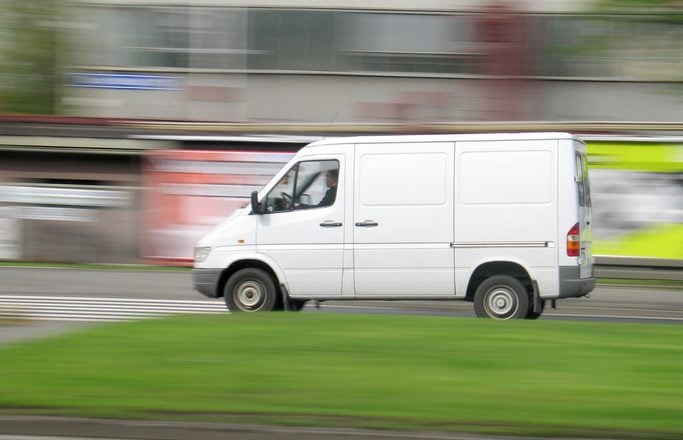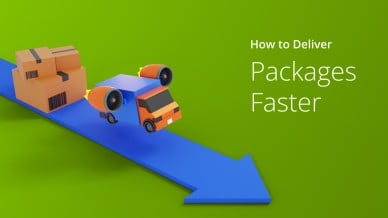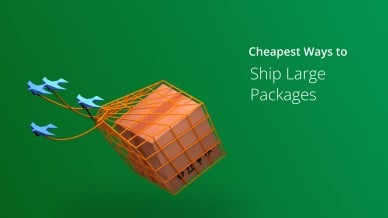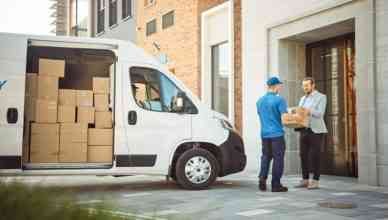Have you heard of middle mile delivery?
Middle mile is a startup term. In the industry, the more common expression is “local distribution” according to David Marcotte, SVP of Americas at Kantar.
Behemoths, such as Amazon and Walmart, have already started making mid mile deliveries, while small retailers and logistics companies are catching up.
But, how is mid mile logistics different from last-mile delivery?
How can mid mile logistics benefit your business?
We explain every nitty-gritty detail about mid mile delivery in this article. So, let’s jump right to it.
What Is Middle Mile Delivery?
Middle mile delivery involves the delivery of goods from a warehouse or distribution center to fulfillment facilities (including retail stores) from where the customers will eventually buy their products.
It has become so important because it offers companies the cost-saving opportunities that last-mile delivery doesn’t.
Want To See For Yourself How Route4Me Can Boost Your Profits?

Middle Mile vs Last-Mile Delivery
CEO of Advanced Training Systems, John Kearney, has said that middle mile logistics has been emerging as the main area of competition and growth in the consumer goods supply chain in the United States.
He differentiates between last-mile delivery and mid mile delivery as follows:
- Last-mile delivery involves the delivery of products to a retail store or customer from a fulfillment center.
- Middle mile delivery involves the delivery of products from a factory or point-of-origin (seaport or airport) to a fulfillment center.
Mid mile logistics connects shippers with drivers by using programmed algorithms to match a given product delivery with that of the capabilities, schedule, and location of the truckers.
What Are the Advantages of Middle Mile Delivery?
Reduces Costs
Middle mile delivery provides you with cost-cutting opportunities, which last-mile delivery could not provide.
This supply chain strategy involves ownership of the warehouse or distribution center as well as the brick-and-mortar facility (the retail store), enabling you to control both ends of the supply chain segment.
Thus, it reduces inefficiencies, helps you take total control, and ultimately generates savings.
Gain a Competitive Advantage
More companies are tightening their supply chains so that they can maintain competitive pricing as well as healthy margins, even in the retail brick-and-mortar market space.
Cost-cutting with mid mile delivery enables giants like Walmart and Amazon to offer their customers products at prices that are even lower than the digital retailers.
Higher velocity and lower landed costs are now easier for the big retail giants to pass directly on to their consumers, without lowering their margins.
Adapt to Changes Quickly
Your ability to adapt to changes increases when you tighten your middle mile logistics.
For example, Walmart’s ability to adapt to changes has increased manifold as they owned their middle mile logistics. As there is the least margin of errors, consolidation, and optimization among companies or partners increase.
When the third-party intermodal companies adopt the middle mile delivery strategy, they start controlling both the local drayage and long-haul trucking segments. This helps them adapt to changes more quickly.
How Are Companies Adopting Middle Mile Delivery?
Amazon
Amazon has rolled out their new freight brokerage operation to all 48 contiguous US states, after running a successful pilot trial in five Northeastern states.
It has emboldened Amazon’s position in competing with other large digital brokerage firms, especially during the peak shipping season.
Amazon now has more control over its supply chain as it announced (back in October 2019) the buying of heavy-duty tractors from Volvo.
The company traditionally relied on thousands of owned or leased truck trailers. The eCommerce sales of Amazon increased by around 49% from March to April 2020.
To keep up with the pace of growth and deliver products to their customers faster and more efficiently at the lowest cost, Amazon is ramping up its middle mile delivery logistics.
They are aggressively working on freight brokerage, airfreight service, and last-mile parcel deliveries to meet their long-term objectives.
Amazon has also announced hiring new employees, including drivers, for both its warehouses and delivery operations across the US.
Walmart
Retail giant Walmart has identified “milk runs” to curtail costs.
To achieve affordability in the mid mile delivery, they have started to use unmanned vehicles to transport goods affordably in the routes that remain the same every time.
Walmart expects that the complete rollout of these vehicles will bring down the costs associated with middle mile logistics and delivery by half.
Third-Party Logistics Services
There are many third-party transport and truckload service providers (such as Schneider and J.B. Hunt Transport Services, Inc.) that have started providing middle mile delivery services.
These intermodal carriers have started bringing more of their supply chain in-house so that they can gain more control over the costs.
In addition to cost savings, these services also provide a stickier and more cohesive service.
On-Demand Services Are Changing Middle Mile Delivery
With the incorporation of on-demand service providers, both the efficiency and flexibility of mid mile delivery have improved. This has been possible as networks of the local truck and cargo van owners are leveraged by the on-demand service providers to mobilize them extremely quickly.
The on-demand middle mile service providers offer quicker deployment than their traditional ones. The network of these on-demand middle mile delivery services includes smaller hauling vehicles (such as box trucks and cargo vans) to make LTL deliveries, single pallets, and other hotshot jobs.
In comparison to traditional services, on-demand service providers leverage large networks of freelancers to gain a cost advantage over their peers in this highly competitive market.
Conclusion about Middle Mile Delivery
If you are considering adopting a middle mile delivery strategy, you must look beyond the rate of the freights.
For success, you have to go for logistical optimization to off-peak trucking so that it becomes easier for you to cut costs throughout the fulfillment process.
Want To See For Yourself How Route4Me Can Boost Your Profits?







